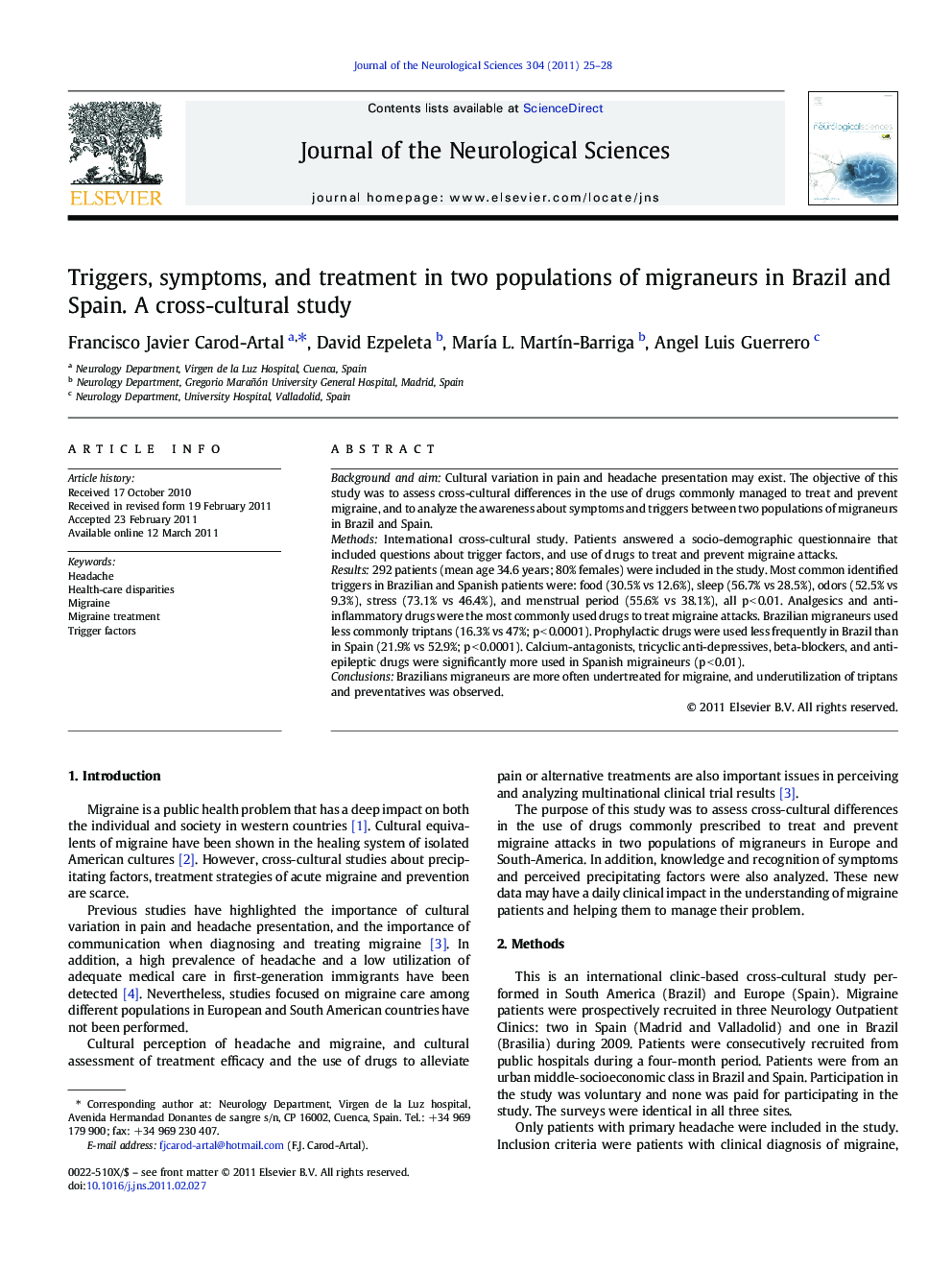| Article ID | Journal | Published Year | Pages | File Type |
|---|---|---|---|---|
| 1914228 | Journal of the Neurological Sciences | 2011 | 4 Pages |
Background and aimCultural variation in pain and headache presentation may exist. The objective of this study was to assess cross-cultural differences in the use of drugs commonly managed to treat and prevent migraine, and to analyze the awareness about symptoms and triggers between two populations of migraneurs in Brazil and Spain.MethodsInternational cross-cultural study. Patients answered a socio-demographic questionnaire that included questions about trigger factors, and use of drugs to treat and prevent migraine attacks.Results292 patients (mean age 34.6 years; 80% females) were included in the study. Most common identified triggers in Brazilian and Spanish patients were: food (30.5% vs 12.6%), sleep (56.7% vs 28.5%), odors (52.5% vs 9.3%), stress (73.1% vs 46.4%), and menstrual period (55.6% vs 38.1%), all p < 0.01. Analgesics and anti-inflammatory drugs were the most commonly used drugs to treat migraine attacks. Brazilian migraneurs used less commonly triptans (16.3% vs 47%; p < 0.0001). Prophylactic drugs were used less frequently in Brazil than in Spain (21.9% vs 52.9%; p < 0.0001). Calcium-antagonists, tricyclic anti-depressives, beta-blockers, and anti-epileptic drugs were significantly more used in Spanish migraineurs (p < 0.01).ConclusionsBrazilians migraneurs are more often undertreated for migraine, and underutilization of triptans and preventatives was observed.
